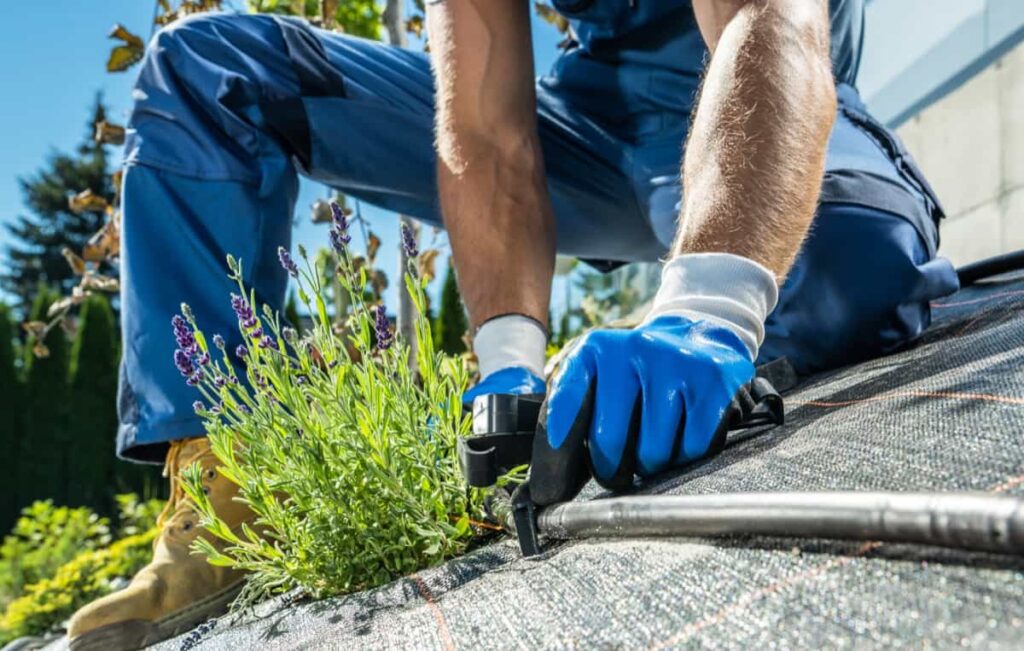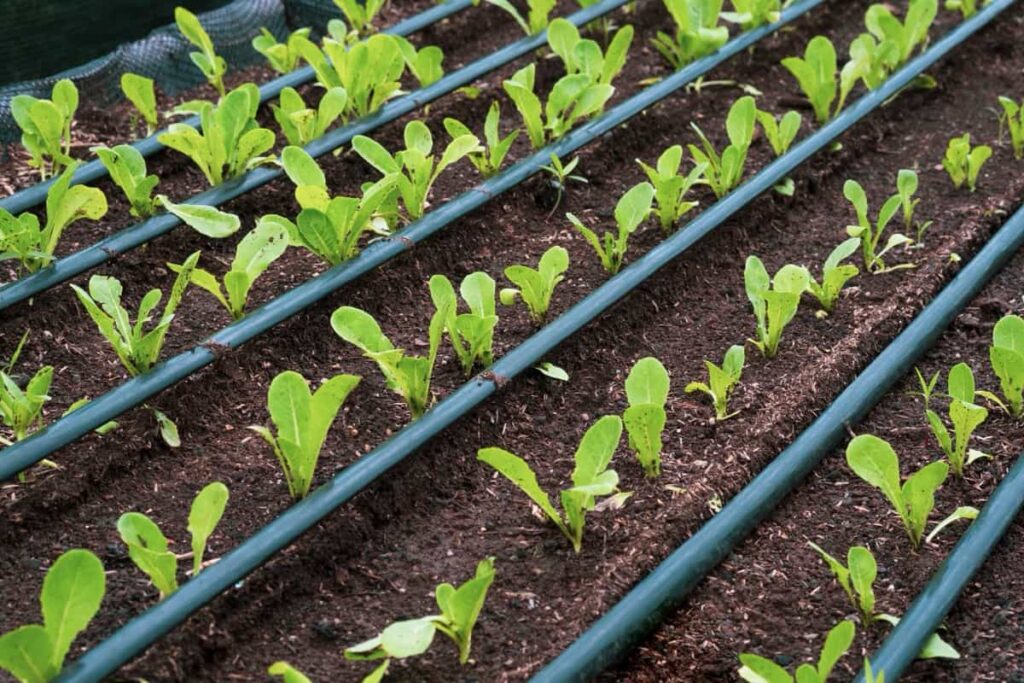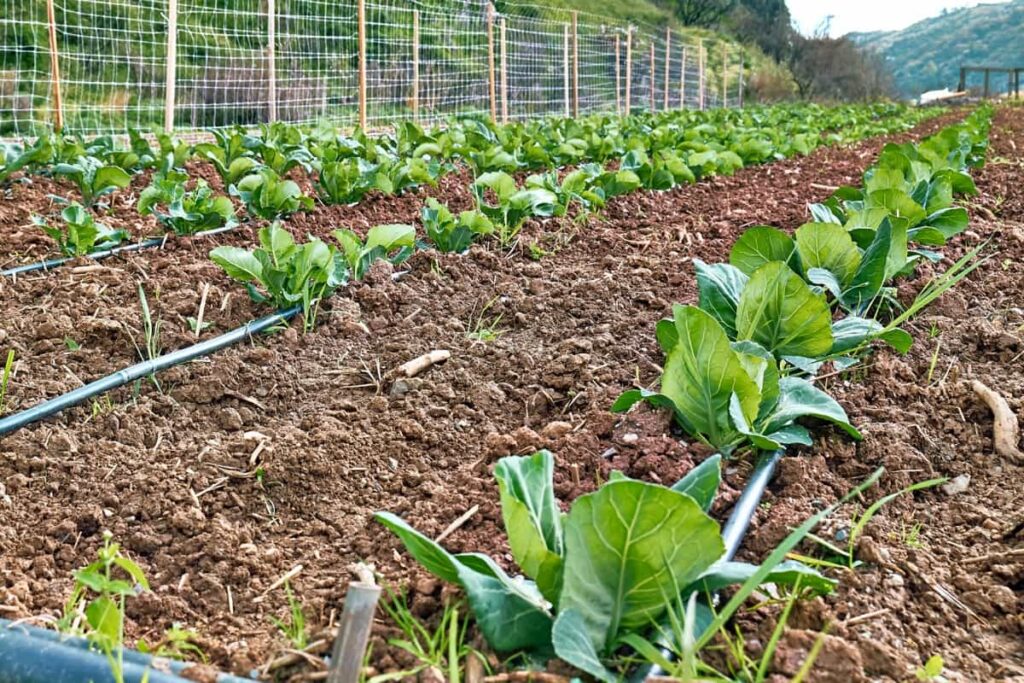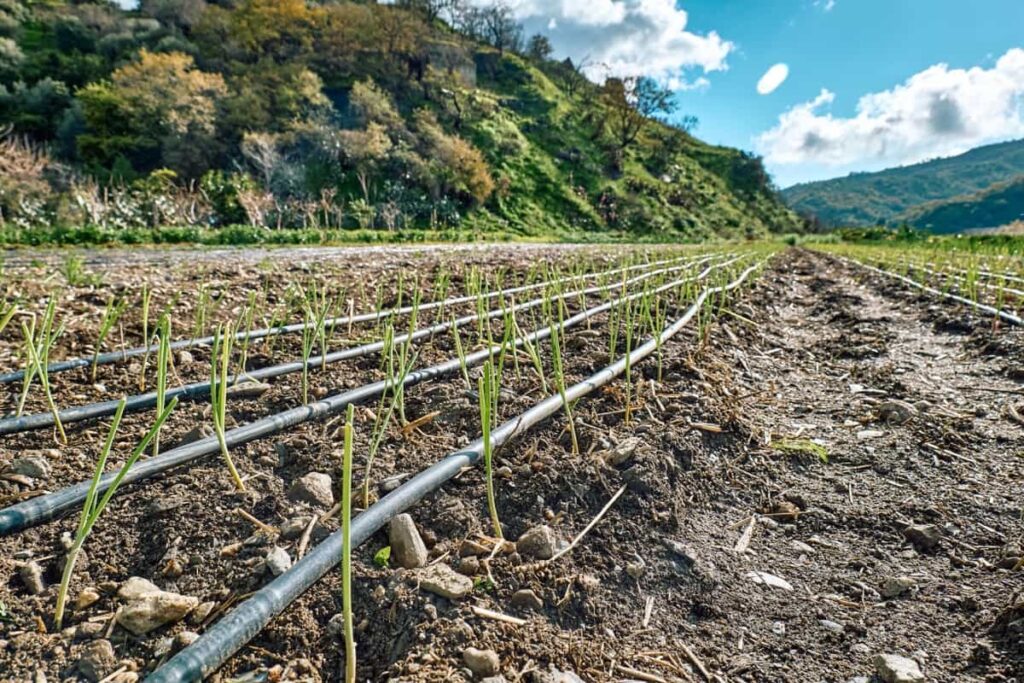Drip irrigation, an efficient water-saving technique, is increasingly vital in India’s agricultural landscape. This blog explores the varying state-wide subsidies offered per acre for drip irrigation systems. Understanding these subsidies is crucial for farmers seeking to optimize water usage and enhance crop yields.

We will delve into the different percentages of financial support provided by state governments, offering insights into how these subsidies can make drip irrigation more accessible and cost-effective for India’s diverse agricultural community.
Types of Drip Irrigation Systems and Their Subsidy Amounts
Surface drip irrigation: The emitters or drippers are placed on the soil surface near the plant base. This system is suitable for crops with shallow root systems and low water requirements, such as vegetables, flowers, and orchards.
Sub-surface drip irrigation: The emitters or drippers are buried below the soil surface at a depth of 10-40 cm. This system is suitable for crops with deep root systems and high water requirements, such as sugarcane, cotton, and banana.
Inline drip irrigation: The emitters or drippers are integrated into the lateral pipes at regular intervals. This system is suitable for row crops and closely spaced crops, such as maize, wheat, and potato.
Online drip irrigation: The emitters or drippers are attached to the lateral pipes separately. This system is suitable for widely spaced crops and irregularly shaped fields, such as grapes, mango, and coconut.
The Central Government provides subsidy or financial assistance at 55 percent of the indicative unit cost to the small and marginal farmers and at 45 percent to other farmers to encourage them to install drip irrigation systems under the Per Drop More Crop (PDMC) scheme to enhance the coverage. The indicative unit cost varies depending on the type of drip irrigation system, the crop, and the state. The subsidy amount is released to the farmers through Direct Benefit Transfer (DBT) after verification of installation.
Benefits of Drip Irrigation Subsidy
- It reduces the initial investment cost for the farmers and makes drip irrigation more affordable and accessible.
- It promotes water conservation and efficient use of irrigation water by reducing evaporation, runoff, and deep percolation losses.
- It improves crop productivity, quality by providing uniform and optimal moisture and nutrient supply to the plants.
- It reduces weed growth and pest infestation by minimizing soil wetting and humidity.
- It saves labor, energy, and fertilizer costs by automating irrigation scheduling and fertigation.
In case you missed it: 10 Best Drip Irrigation Kits for Potted Plants in India

Factors Affecting the Drip Irrigation Subsidy
- The state government determines the subsidy amount and eligibility criteria for drip irrigation in each state based on the availability of funds, local conditions, and priorities.
- The crop type influences the subsidy amount, as some crops require more water and have higher returns than others. For example, horticultural crops like fruits, vegetables, and flowers usually get higher subsidies than field crops like cereals and pulses.
- The irrigation equipment affects the subsidy amount, as some equipment is more efficient and durable than others. For example, inline drippers, pressure-compensating drippers, and micro-sprinklers usually get higher subsidies than inline drippers and conventional sprinklers.
- The category of the farmer determines the subsidy percentage, as small and marginal farmers get higher subsidies than other farmers. Small farmers are those who own up to 2 hectares of land, while marginal farmers are those who own up to 1 hectare of land.
State-wise Drip Irrigation Subsidy
| State | Subsidy Amount (Rs./ha) | Subsidy Percentage (%) |
| Andhra Pradesh | 45,000 – 75,000 | 55 – 90 |
| Bihar | 36,000 – 54,000 | 60 – 90 |
| Gujarat | 36,000 – 72,000 | 50 – 75 |
| Karnataka | 36,000 – 72,000 | 50 – 75 |
| Maharashtra | 36,000 – 72,000 | 50 – 75 |
| Rajasthan | 36,000 – 72,000 | 50 – 75 |
| Tamil Nadu | 45,000 – 90,000 | 55 – 100 |
| Telangana | 45,000 – 75,000 | 55 – 90 |
| Uttar Pradesh | 36,000 – 54,000 | 60 – 90 |
Crop-wise Drip Irrigation Subsidy
| Crop | Subsidy Amount (Rs./ha) | Subsidy Percentage (%) |
| Banana | 54,000 – 90,000 | 60 – 100 |
| Cotton | 36,000 – 54,000 | 50 – 75 |
| Grapes | 72,000 – 108,000 | 75 – 100 |
| Mango | 54,000 – 90,000 | 60 – 100 |
| Sugarcane | 36,000 – 54,000 | 50 – 75 |
| Tomato | 54,000 – 90,000 | 60 – 100 |
Comparison of Drip Irrigation Subsidy with Other Irrigation Methods
Drip irrigation is a method of watering crops that saves water and fertilizer by delivering them directly to the roots of the plants. Drip irrigation can increase crop yield and quality, reduce pest and disease problems, and save labor and energy. The government of India provides subsidies or financial assistance to farmers who want to setup drip irrigation systems under the Per Drop More Crop (PDMC) scheme.
In case you missed it: 12 Best Drip Irrigation Kits for 1-acre, 50, 100, and 1000 Plants: Price List Included

Drip irrigation subsidy is higher than other irrigation methods such as sprinkler, surface, or flood irrigation. The subsidy for drip irrigation is 55% of the indicative unit cost for small and marginal farmers and 45% for other farmers. The indicative unit cost is the average cost of installing drip irrigation systems for different crops and regions. The subsidy for other irrigation methods ranges from 35% to 50%, depending on the type of farmer and the state.
Eligibility Criteria for Drip Irrigation Subsidy
To be eligible for drip irrigation subsidy, the farmer must have a valid Aadhaar card, a bank account, and a land record. The farmer must also belong to one of the following categories:
- Small farmer: A farmer who owns up to 2 hectares of land
- Marginal farmer: A farmer who owns up to 1 hectare of land
- Other farmer: A farmer who owns more than 2 hectares of land
- The farmer must also grow crops that are suitable for drip irrigation, such as fruits, vegetables, spices, flowers, oilseeds, pulses, cotton, sugarcane, etc.
Documents Required for Applying for Drip Irrigation Subsidy
- Aadhaar card
- Bank passbook
- Land record
- Crop details
- Quotation from drip irrigation supplier
- Photographs of the field before and after installation
Procedure for Applying for Drip Irrigation Subsidy
- Contact the nearest agriculture office or Krishi Vigyan Kendra (KVK) to get information about the PDMC scheme and the list of approved drip irrigation suppliers.
- Select a suitable drip irrigation system and get a quotation from the supplier.
- Fill out the application form and attach the required documents.
- Submit the application form to the agriculture office or KVK.
- Wait for verification and approval from the authorities.
- Receive the subsidy amount in the applicant’s bank account after installation and inspection.
In case you missed it: Lawn Irrigation System Cost: Estimating Cost Per Square Foot for Different Types

Drip Irrigation Subsidy Per Acre in India
The drip irrigation subsidy per acre in India varies depending on the type of crop, the kind of farmer, and the state where the farmer lives. The indicative unit cost per acre for different crops ranges from Rs. 25,000 to Rs. 1,50,000. The subsidy amount is calculated as a percentage of the indicative unit cost. For example, if a small farmer grows cotton in Maharashtra, the indicative unit cost per acre is Rs. 50,000, and the subsidy amount is Rs. 27,500 (55% of Rs. 50,000).
- Crops Grown in Summer Season: Best Choices for Summer Gardening
- Organic Pest Control for Tomato Farming
- How to Maximize Sheep Farming Profit
- Broccoli Varieties: Choosing the Right Cultivars for Your Farm
- How to Raise Pigs in Your Own Backyard: A Comprehensive Guide
- Budget Friendly Sheep Shed Ideas: Cheap and Low-Cost Tips
- How Much Do Cattle Farmers Make: Revenue Streams in Cattle Farming
- Management Pests and Diseases in Your Cotton Field
- Sheep Farming Business Plan for Beginners
